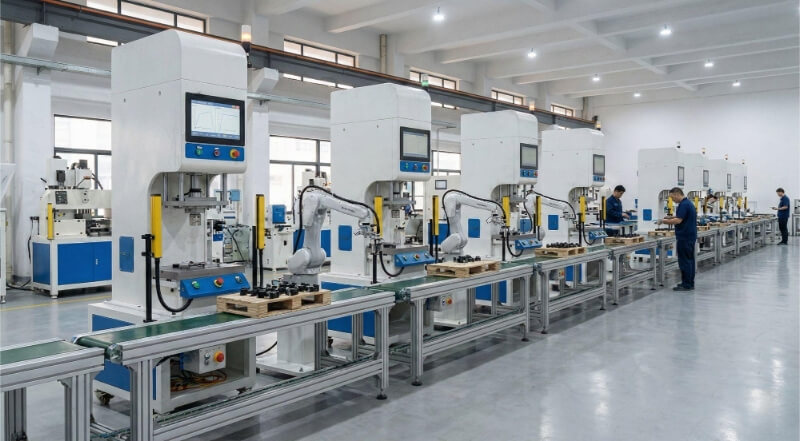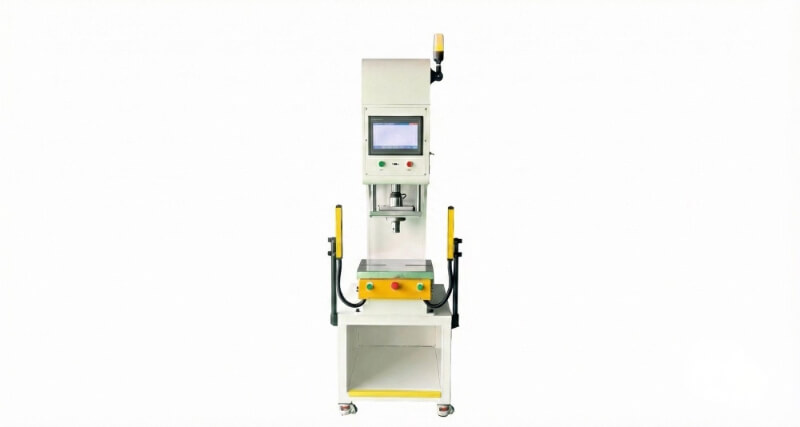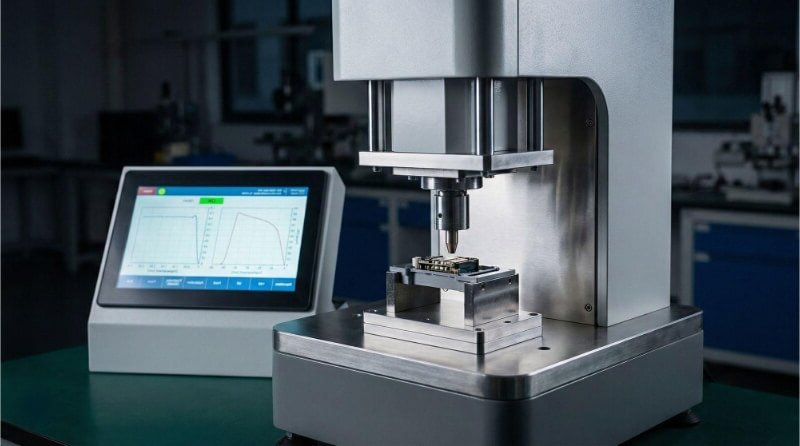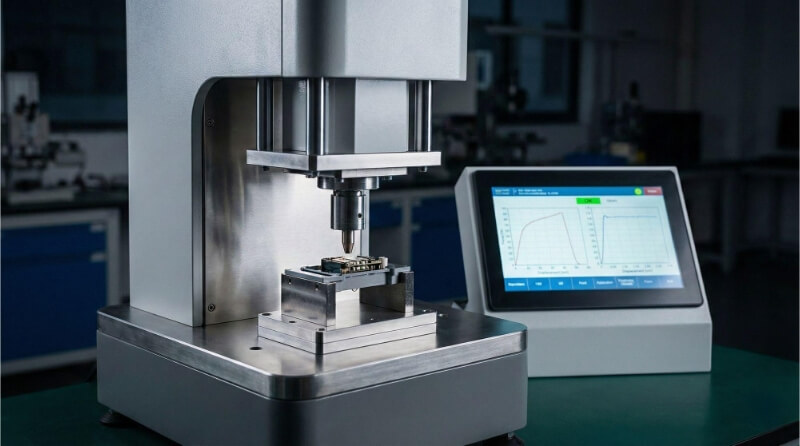Molte aziende si trovano ad affrontare la stessa sfida. Hanno bisogno di consegnare rapidamente i prodotti finiti, ma spesso non hanno il tempo, i lavoratori o le attrezzature per gestire tutto da sole. L'outsourcing aiuta a risolvere questo problema. Permette alle aziende di concentrarsi sulla progettazione, sulle vendite e sulla crescita, mentre esperti qualificati supervisionano il lavoro di produzione. Quando le aziende esternalizzano l'assemblaggio, risparmiano tempo, riducono i costi e ricevono una qualità costante in ogni ordine.
L'assemblaggio dei contratti presenta evidenti vantaggi, ma solleva anche delle questioni. Per capirlo meglio, esaminiamo come funziona e perché è importante.
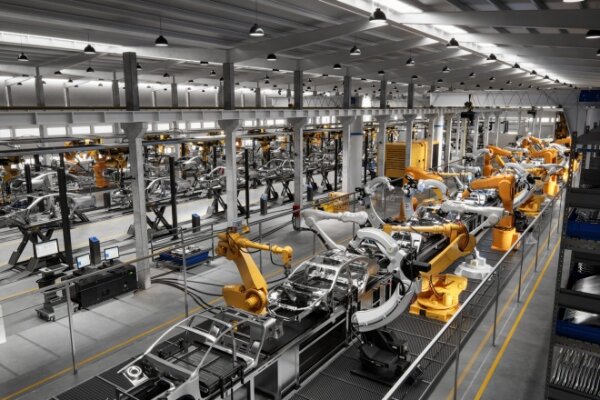
Che cos'è l'Assemblea contrattuale?
Per assemblaggio a contratto si intende la collaborazione con un partner esterno per l'assemblaggio di parti, sottogruppi o prodotti finiti. Il cliente può fornire i componenti o chiedere al fornitore di procurarseli. Il fornitore segue poi le istruzioni fornite per assemblare il prodotto. Questo metodo aiuta le aziende a controllare i costi, a ridurre i rischi e a concentrarsi sulle loro attività principali.
Il rapporto cliente-fornitore
Il cliente e il fornitore hanno bisogno di una comunicazione chiara e di fiducia. Il cliente stabilisce i requisiti, le scadenze e gli standard di qualità. Il fornitore si impegna a seguire queste indicazioni e a fornire risultati coerenti. Entrambe le parti devono essere aperte sulla pianificazione, sull'uso dei materiali e sulle fasi di produzione.
Ambito di lavoro e responsabilità
L'ambito di lavoro spiega cosa farà il fornitore e cosa deve fornire il cliente. Spesso include l'approvvigionamento dei materiali, le fasi di assemblaggio, il collaudo, l'imballaggio e la consegna. Il cliente è responsabile di fornire specifiche, disegni e programmi accurati. Il fornitore deve completare il processo di assemblaggio per soddisfare gli standard concordati.
Il processo di assemblaggio del contratto
Il processo di assemblaggio per conto terzi segue un percorso chiaro che trasforma i pezzi grezzi in prodotti finiti. Ecco una semplice ripartizione delle fasi.
Progettazione iniziale e supporto ingegneristico
Il processo inizia spesso con il supporto alla progettazione e all'ingegneria. I fornitori esaminano disegni, campioni o prototipi. Possono suggerire modifiche che rendano il prodotto più facile da costruire, che riducano i costi o i tempi di produzione. Questa fase garantisce che il cliente e il fornitore concordino sui dettagli tecnici prima dell'assemblaggio.
Approvvigionamento e approvvigionamento di componenti
Una volta confermato il progetto, l'attenzione si sposta sui materiali. A volte il cliente fornisce tutti i componenti. In altri casi, è il fornitore a reperire e acquistare i componenti. I fornitori di fiducia vengono scelti per soddisfare le esigenze di qualità e di consegna. L'obiettivo è avere i pezzi giusti pronti in tempo.
Impostazione della linea di assemblaggio e flusso di lavoro
Una volta posizionati i materiali, il fornitore prepara la linea di assemblaggio. Ciò comporta l'allestimento di postazioni di lavoro, strumenti e attrezzature per supportare un lavoro efficiente. Ogni compito è organizzato in modo da evitare confusione. Un flusso di lavoro chiaro migliora la velocità, riduce gli sprechi e garantisce risultati uniformi.
Controllo qualità e procedure di test
I controlli di qualità vengono effettuati in ogni fase. I fornitori ispezionano i pezzi in arrivo, controllano le fasi di assemblaggio e testano il prodotto finito. I test possono includere verifiche meccaniche, ispezioni di adattamento o prove di prestazione. Questi controlli confermano che il prodotto soddisfa gli standard del cliente prima dell'imballaggio.
Imballaggio e consegna finale
L'ultima fase è l'imballaggio e la consegna. I fornitori imballano i prodotti secondo le richieste dei clienti, sia che si tratti di scaffali per la vendita al dettaglio che di spedizioni all'ingrosso. Un imballaggio sicuro protegge gli articoli durante il trasporto. I prodotti finiti vengono poi consegnati al cliente o spediti direttamente ai clienti finali, a seconda dell'accordo.
Tipi di servizi di assemblaggio a contratto
I servizi di assemblaggio a contratto sono disponibili in diverse forme per soddisfare le specifiche esigenze aziendali. Ecco i servizi standard disponibili.
Sottogruppo
Il sottoassemblaggio consiste nell'assemblare unità più piccole che in seguito diventeranno parte di un prodotto più grande. Aiuta i produttori a risparmiare tempo preparando i componenti in anticipo. Questo servizio è standard nell'industria automobilistica, elettronica e dei macchinari.
Assemblaggio del prodotto
L'assemblaggio del prodotto prevede la combinazione di tutte le parti in un prodotto finito. I fornitori seguono le specifiche del cliente per garantire l'accuratezza. Questo processo è utile per le aziende che vogliono consegnare prodotti pronti all'uso direttamente ai clienti.
Montaggio meccanico
L'assemblaggio meccanico si concentra sulle parti che devono essere fissate, saldaturao raccordo. Spesso si tratta di componenti in metallo o plastica che richiedono resistenza strutturale. Questo tipo di servizio è comune nelle apparecchiature, negli elettrodomestici e nei prodotti industriali.
Assemblaggio elettromeccanico
Un gruppo elettromeccanico combina parti elettriche e meccaniche. Ne sono un esempio i cablaggi, i pannelli di controllo e i dispositivi elettronici. La manodopera specializzata è necessaria per garantire connessioni elettriche sicure e affidabili.
Servizi di imballaggio
I servizi di imballaggio preparano i prodotti per la spedizione, lo stoccaggio o la vendita al dettaglio. I fornitori possono utilizzare imballaggi protettivi, personalizzati o di marca in base alle esigenze del cliente. Un buon imballaggio previene i danni e migliora l'esperienza dell'utente finale.
Servizi di kitting
Kitting significa raggruppare parti diverse in un unico pacchetto pronto per la spedizione. È ampiamente utilizzato nel commercio elettronico, nelle forniture mediche e nella produzione. Combinando tutti gli articoli in un unico kit, le aziende risparmiano tempo di gestione e riducono gli errori.
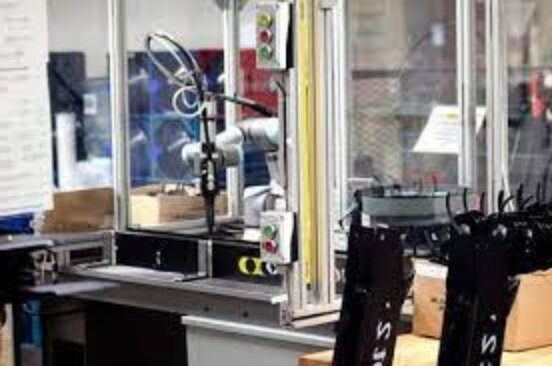
Vantaggi dell'assemblaggio a contratto
L'assemblaggio in conto terzi aiuta le aziende a semplificare la produzione e ad aggiungere valore reale. I vantaggi vanno oltre il risparmio di tempo. Sono anche in grado di supportare operazioni più forti ed efficienti.
Risparmio ed efficienza
L'outsourcing dell'assemblaggio riduce la necessità di personale, formazione e attrezzature supplementari. Le aziende tagliano i costi generali e pagano solo per i servizi che utilizzano. I fornitori spesso gestiscono processi semplificati che riducono gli sprechi e migliorano l'efficienza.
Accesso a competenze specialistiche
I fornitori di servizi di assemblaggio a contratto offrono team qualificati e pratiche collaudate. Sanno come lavorare con materiali, parti e metodi di assemblaggio diversi. Questa esperienza garantisce risultati affidabili e meno errori durante la produzione.
Scalabilità e flessibilità
Le aziende possono aumentare o diminuire la produzione in base alla domanda. I fornitori possono spostare rapidamente la capacità produttiva per adeguarla alle dimensioni degli ordini senza ritardi. Questa flessibilità facilita la gestione di picchi stagionali o di improvvisi cambiamenti di mercato.
Time-to-Market più rapido
L'outsourcing accelera i cicli di produzione. I fornitori dispongono già di personale qualificato e delle attrezzature giuste, riducendo i tempi di consegna e aiutando le aziende a consegnare i prodotti ai clienti più rapidamente.
Sfide e rischi nell'assemblaggio dei contratti
L'assemblaggio per conto terzi comporta molti vantaggi, ma anche sfide che le aziende devono gestire. La comprensione di questi rischi aiuta a prevenire ritardi e costi aggiuntivi.
Problemi di garanzia della qualità
Mantenere una qualità costante può essere più difficile quando la produzione avviene al di fuori dell'azienda. I fornitori possono seguire le istruzioni, ma gli errori possono comunque verificarsi. Ispezioni e verifiche regolari sono fondamentali per garantire la conformità dei prodotti agli standard.
Dipendenza dalla catena di fornitura
L'assemblaggio in outsourcing si basa spesso su un'ampia catena di fornitura. Ritardi nelle consegne o carenze di materiale possono rallentare la produzione. La collaborazione con fornitori di fiducia aiuta a ridurre questi rischi.
Problemi di comunicazione e coordinamento
L'assemblaggio del contratto richiede un forte coordinamento tra il cliente e il fornitore. Una scarsa comunicazione può causare errori nelle specifiche, nei programmi o nelle consegne. Una documentazione chiara e aggiornamenti regolari mantengono entrambe le parti allineate.
Protezione della proprietà intellettuale
Condividere progetti e dettagli tecnici con partner esterni comporta qualche rischio. Le aziende devono proteggere le informazioni sensibili con contratti, accordi di non divulgazione e sistemi di dati sicuri. Queste misure riducono le possibilità di uso improprio.
Assemblaggio a contratto vs. Produzione a contratto
Assemblaggio e produzione a contratto sono strettamente collegati. Entrambi consentono alle aziende di esternalizzare il lavoro di produzione, ma si differenziano per la portata e il livello di assistenza.
Similitudini principali
Entrambi i modelli utilizzano fornitori esterni per gestire parti del processo produttivo. Riducono le spese generali, fanno risparmiare tempo e danno accesso a manodopera qualificata. Ciascuno di questi modelli consente alle aziende di concentrarsi sulla progettazione, sulle vendite e sulla crescita, affidandosi a un partner per le attività di produzione.
Differenze importanti
L'assemblaggio a contratto consiste nel mettere insieme i pezzi forniti o i componenti acquistati. Il fornitore si occupa solo della fase di assemblaggio.
La produzione a contratto, invece, copre l'intero processo. Può includere la progettazione, l'approvvigionamento dei materiali, la produzione, l'assemblaggio e persino la spedizione, rendendola una soluzione più ampia e completa.
Quando scegliere l'uno piuttosto che l'altro?
Le aziende che dispongono già dei componenti o che desiderano un maggiore controllo sull'approvvigionamento scelgono spesso l'assemblaggio in conto terzi.
Le aziende che hanno bisogno di un supporto completo alla produzione, dalle materie prime ai prodotti finiti, traggono maggiori vantaggi dalla produzione per conto terzi. La scelta dipende dal grado di controllo e di coinvolgimento dell'azienda nella catena di fornitura.
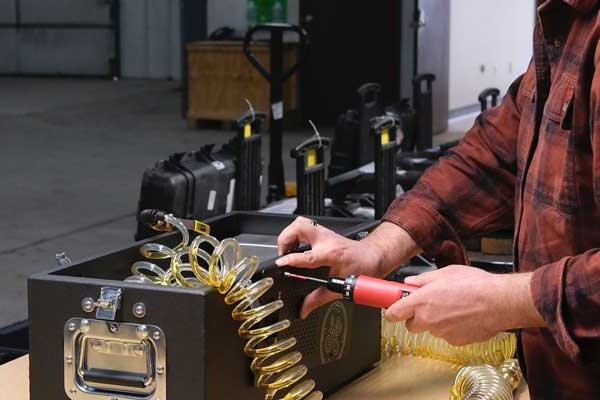
Quali settori utilizzano l'assemblaggio per conto terzi?
L'assemblaggio per conto terzi è di supporto a molti settori. Qualsiasi azienda che abbia bisogno di una produzione affidabile ed efficiente può trarre vantaggio dall'esternalizzazione delle attività di assemblaggio.
Elettronica
Le aziende del settore elettronico ricorrono spesso all'assemblaggio per conto terzi di circuiti stampati, cablaggi e dispositivi di consumo. Tecnici qualificati assicurano che i collegamenti siano accurati e che le prestazioni siano coerenti tra le varie unità.
Automotive
L'industria automobilistica ricorre all'assemblaggio in conto terzi per sottogruppi, cruscotti, sistemi di cablaggio e piccole parti meccaniche. L'outsourcing consente di soddisfare elevati volumi di produzione, mantenendo al contempo rigorosi standard di qualità.
Dispositivi medici
Le aziende produttrici di dispositivi medici ricorrono all'assemblaggio in conto terzi per strumenti diagnostici, apparecchiature e dispositivi indossabili. La precisione e la conformità alle normative sono di vitale importanza, rendendo i fornitori esperti essenziali per il processo.
Attrezzature commerciali
I produttori di apparecchiature industriali e commerciali ricorrono all'assemblaggio in conto terzi per i macchinari, attrezzature per la sicurezza stradale sistemi HVAC e strumenti specializzati. I fornitori contribuiscono a snellire la produzione e ad accorciare i tempi di consegna, in modo che le attrezzature arrivino ai clienti in tempo.
Scegliere il giusto partner per l'assemblaggio dei contratti
La scelta del partner giusto è fondamentale. Un fornitore solido garantisce qualità, velocità e collaborazione senza intoppi.
Valutazione delle capacità e delle competenze
Iniziate a verificare le competenze e l'esperienza del fornitore. Esaminate i tipi di prodotti che hanno assemblato e la complessità dei progetti passati. Chiedete informazioni sulla forza lavoro, sulle attrezzature e sul flusso di lavoro. Un partner capace dovrebbe gestire materiali, tecniche e volumi di produzione diversi.
Verifica delle certificazioni e degli standard
Le certificazioni dimostrano che un fornitore segue pratiche di qualità e sicurezza riconosciute. La ISO 9001 è comune per la gestione della qualità, mentre la ISO 13485 si applica ai dispositivi medici. A seconda del settore, possono essere necessari altri standard, come RoHS per l'elettronica o AS9100 per le parti aerospaziali.
Considerare la posizione e la logistica
L'ubicazione del fornitore influisce sui costi, sui tempi di consegna e sulla comunicazione. Un partner locale può ridurre le spese di spedizione e accelerare la consegna. I partner esteri possono offrire costi di manodopera inferiori o competenze uniche. Considerate la logistica, le opzioni di spedizione e i rischi come i ritardi doganali.
Conclusione
L'assemblaggio a contratto consente alle aziende di esternalizzare l'assemblaggio di parti o prodotti a fornitori qualificati. In questo modo si risparmia tempo, si riducono i costi e si ha accesso a competenze specializzate. Le aziende possono scalare la produzione, migliorare l'efficienza e portare i prodotti sul mercato più velocemente, mantenendo la qualità.
Siete pronti a ottimizzare la vostra produzione? Parlaci del tuo progetto oggi stesso e ottieni un preventivo gratuito. Costruiamo insieme il vostro prodotto.
Domande frequenti
Come posso assicurarmi che il mio progetto di prodotto sia adatto all'assemblaggio in conto terzi?
Rivolgetevi ai potenziali partner di assemblaggio fin dalle prime fasi del processo di progettazione. Possono fornire un'analisi di progettazione per la producibilità (DFM) per identificare potenziali problemi di produzione, suggerire modifiche per un assemblaggio più semplice ed economico e garantire che il progetto sia ottimizzato per i loro processi.
Quali sono i contratti e gli accordi tipici coinvolti?
Il rapporto è regolato da un contratto dettagliato che delinea l'ambito di lavoro, gli standard di qualità, i prezzi, i termini di pagamento, la responsabilità, la proprietà intellettuale, la riservatezza (NDA) e le clausole di risoluzione. È fondamentale che questi accordi vengano esaminati da un consulente legale.
Chi è responsabile se un componente fornito dalla mia azienda è difettoso?
In un modello di assemblaggio in kit, in cui il cliente fornisce tutti i componenti, il cliente è tipicamente responsabile di parti prive di difetti. L'assemblatore è responsabile della segnalazione dei difetti e del corretto assemblaggio dei prodotti. La responsabilità è definita nel contratto di servizio.
Un assemblatore a contratto può aiutare con l'imballaggio e la spedizione?
Sì, molti assemblatori a contratto offrono servizi a valore aggiunto, tra cui l'imballaggio personalizzato, il branding, il kitting, la gestione della logistica e la spedizione ai distributori o direttamente ai clienti finali, fornendo una soluzione completa end-to-end.
Ciao, sono Kevin Lee

Negli ultimi 10 anni mi sono immerso in varie forme di lavorazione della lamiera, condividendo qui le mie esperienze in diverse officine.
Contattate

Kevin Lee
Ho oltre dieci anni di esperienza professionale nella fabbricazione di lamiere, con specializzazione nel taglio laser, nella piegatura, nella saldatura e nelle tecniche di trattamento delle superfici. In qualità di direttore tecnico di Shengen, mi impegno a risolvere sfide produttive complesse e a promuovere innovazione e qualità in ogni progetto.

